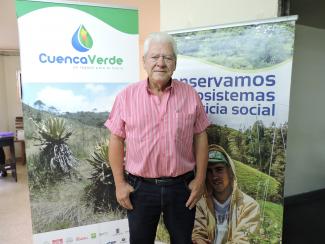The 103,786-hectare watershed, located on the Central Cordillera, is supplying water to the Rio Grande II reservoir. Partially due to the agricultural dynamic of the populations, this basin shows deterioration in the water quality of its main rivers: Rio Chico, Rio Grande and Quebrada Las Animas, as well as its tributaries. Most of the owners living in the basin produce milk and beef.
In order to protect this affected environment and improve the living conditions of the inhabitants, the CuencaVerde Corporation has sought to initiate a sustainable transformation of the territory through the implementation of Payment for Environmental Services (PES) mechanism combined with protection measures and good production practices. Thanks to funding, financial rewards are given to peasants implicated in the project. On the hillside areas, banks, wetlands and water sources of the basins, the owners are committed to conserving 888 hectares of forest that are threatened by agricultural activities, mainly livestock. By recovering basin functions such as water infiltration, resilience to climate change improves. To reduce agricultural pressure on the land, production plans adapted to each farm ("agricultural plans") are set up, at the initiative of the families involved in the CuencaVerde project. For example, silvo-pastoral systems have been set up with local species to care for the soil and water by providing nutrients and organic matter. Moreover, the pasture has also been enriched by planting new seeds.
Sharing this experience strengthens regional dialogue and cooperation on river basin management in neighboring countries in the context of climate change adaptation.
Identification
Region of the world




